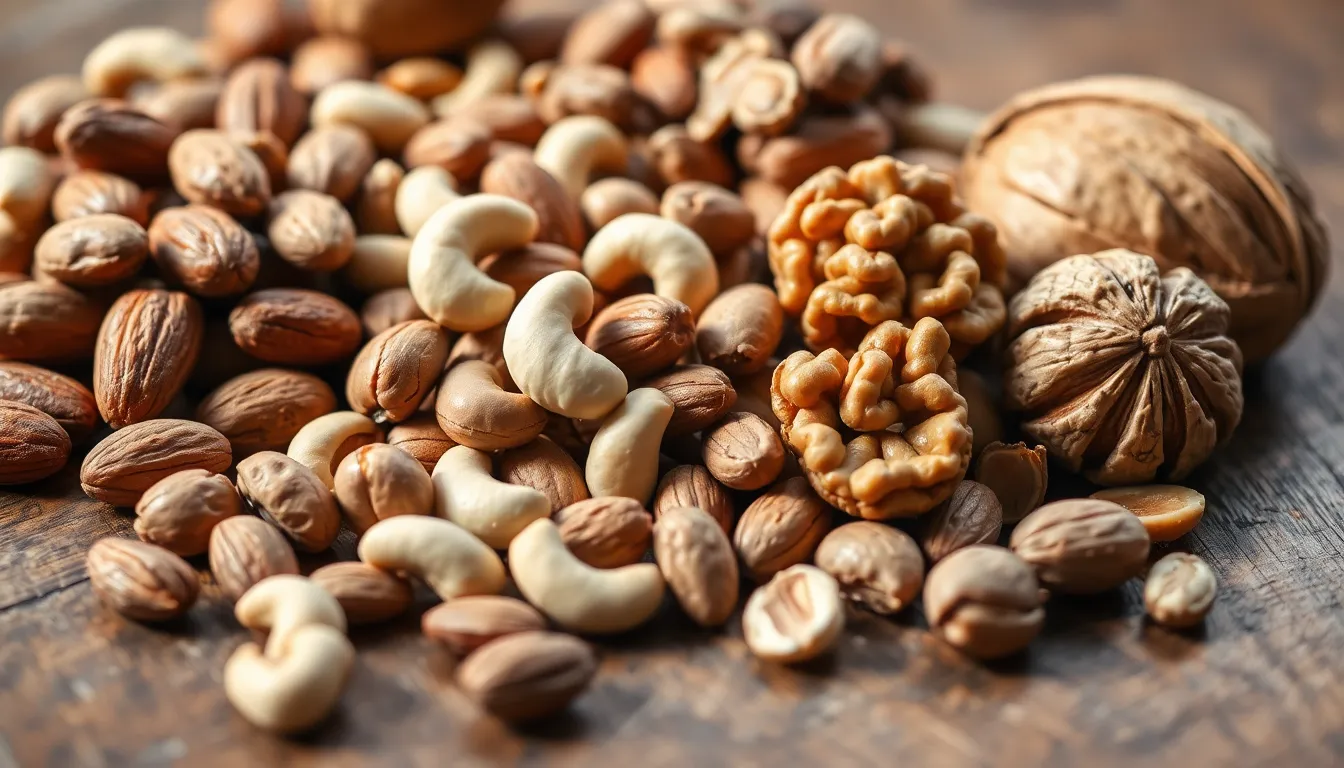When it comes to health, nuts often get a bad rap, but for those dealing with tadicurange disease, they might just be the ultimate villain in disguise. Imagine a party crasher who shows up uninvited, bringing chaos instead of confetti. That’s what nuts can do to individuals managing this condition. Packed with fats and certain compounds, they can stir up trouble in ways one might not expect.
But don’t just take a nutty stance on this topic. Understanding why these crunchy morsels can be detrimental is crucial for anyone looking to navigate the complexities of tadicurange disease. From digestive distress to inflammatory responses, the reasons are as varied as the types of nuts themselves. So grab a seat and let’s crack open the facts about why it’s best to keep those nuts at bay for better health.
Table of Contents
ToggleUnderstanding Tadicurange Disease
Tadicurange disease significantly affects digestive health and immune responses. Individuals with this condition often experience discomfort and inflammation, making dietary choices crucial for managing symptoms. Nuts, commonly perceived as healthful snacks, can exacerbate these issues.
Digestive problems arise because nuts contain high levels of fiber and fat. These components can lead to bloating and gas. They also may cause an inflammatory response in some individuals, which complicates the management of tadicurange disease. Inflammation can override attempts to alleviate discomfort and leads to further complications.
Symptoms linked to tadicurange disease often include abdominal pain and irregular bowel movements. These issues frequently worsen after consuming nuts. Studies show that specific nutrients in nuts may trigger adverse reactions, emphasizing the importance of cautious consumption for affected individuals.
Avoidance of nuts can aid in reducing these symptoms. Many find that switching to softer, easier-to-digest foods leads to better outcomes. Focus on incorporating alternatives like cooked vegetables and lean proteins can provide nourishment without aggravating the disease.
Educating oneself about the impact of various foods proves essential when managing tadicurange disease. Individuals should explore personalized dietary plans with healthcare providers. By understanding the implications of nuts and their effects on the condition, a more effective management strategy can be developed.
Nutritional Composition of Nuts

Nuts contain various nutrients, but their composition poses risks for those with tadicurange disease. Understanding these components helps clarify their effects on digestive health and inflammation.
Healthy Fats vs. Harmful Effects
Healthy fats present in nuts include monounsaturated and polyunsaturated fats, which promote heart health. Despite this benefit, these same fats contribute to increased inflammation in sensitive individuals. High-fat content can lead to digestive discomfort and exacerbate symptoms associated with tadicurange disease. While small amounts may not trigger issues for everyone, the combination of fats and fiber can overwhelm the digestive system, leading to bloating and abdominal pain. Managing fat intake proves crucial for those dealing with this condition.
Allergens and Sensitivities
Common allergens found in nuts, such as cashews and almonds, pose additional risks. Individuals with tadicurange disease may experience heightened sensitivities to these allergens, leading to adverse reactions. Symptoms like swelling, hives, or digestive disturbances can manifest, complicating an already challenging situation. Cross-reactivity can occur, where an allergy to one nut increases the likelihood of reacting to others. Knowledge of these allergens empowers individuals to make safer dietary choices, avoiding potential triggers that can worsen their condition.
Impact of Nuts on Tadicurange Disease
Nuts adversely impact individuals with tadicurange disease, often exacerbating symptoms and inflammatory responses.
Inflammatory Responses
Nuts can trigger significant inflammatory responses in sensitive individuals. The high-fat content within nuts often leads to an increase in cytokines, which are proteins that promote inflammation. Individuals may notice worsening discomfort, such as abdominal pain and bloating, after nut consumption. Digestive systems struggle to process these foods effectively, leading to inflammation not only in the gut but throughout the body. Swelling and discomfort showcase the reaction’s severity, making it vital to monitor nut intake closely. Avoiding nuts can significantly help reduce these inflammatory responses and promote better overall health.
Nutritional Imbalances
Nuts, while often deemed healthy, can create nutritional imbalances. Their high fiber content poses challenges for those with tadicurange disease, often resulting in digestive distress. Difficulty in digesting fiber-rich foods can lead to nutrient deficiencies over time. Lean proteins and softer foods provide essential nutrients without overwhelming the digestive system. Individuals may benefit from considering foods that offer balanced nutrients without inciting symptoms. Diversifying dietary choices with easily digestible options can support overall well-being and enhance nutrient absorption.
Alternatives to Nuts
Exploring alternatives is crucial for managing tadicurange disease. Several options offer nutritional benefits without the adverse effects of nuts.
Other Protein Sources
Lean proteins serve as excellent alternatives. Chicken and turkey provide high protein content with low fat levels, making them easier to digest. Fish, including salmon and cod, also deliver essential nutrients while promoting heart health. Plant-based proteins, such as beans and lentils, offer fiber along with protein, supporting digestive health without causing inflammation. Quinoa, a gluten-free grain, contains significant protein and amends digestive issues. Eggs stand out for their versatility and nutrient density, offering a rich protein source that few can match. Diversifying protein sources plays a vital role in maintaining balanced nutrition without aggravating symptoms.
Safe Snack Options
Several options can replace nut-based snacks. Fruits like bananas and apples provide natural sweetness and fiber, aiding digestion. Yogurt, especially low-fat varieties, offers probiotics that promote gut health. Vegetable sticks paired with hummus present a crunchy, satisfying snack while providing essential nutrients. Rice cakes topped with avocado give healthy fats without the inflammatory effects associated with nuts. Dark chocolate occasionally satisfies sweet cravings while offering antioxidants. Popcorn, popped without oil or butter, serves as a low-calorie snack option full of fiber. Incorporating these alternatives ensures enjoyable snacking while steering clear of potential triggers.
Nuts pose significant challenges for individuals managing tadicurange disease. Their potential to trigger digestive distress and inflammatory responses makes them a risky choice for those affected. By understanding the adverse effects of nuts and recognizing the importance of dietary adjustments, individuals can take proactive steps toward better health.
Choosing alternatives that are easier to digest can lead to improved symptom management and overall well-being. Embracing a diverse range of safe food options not only supports digestive health but also enhances nutrient absorption. Ultimately, making informed dietary choices empowers individuals to navigate the complexities of tadicurange disease more effectively.




